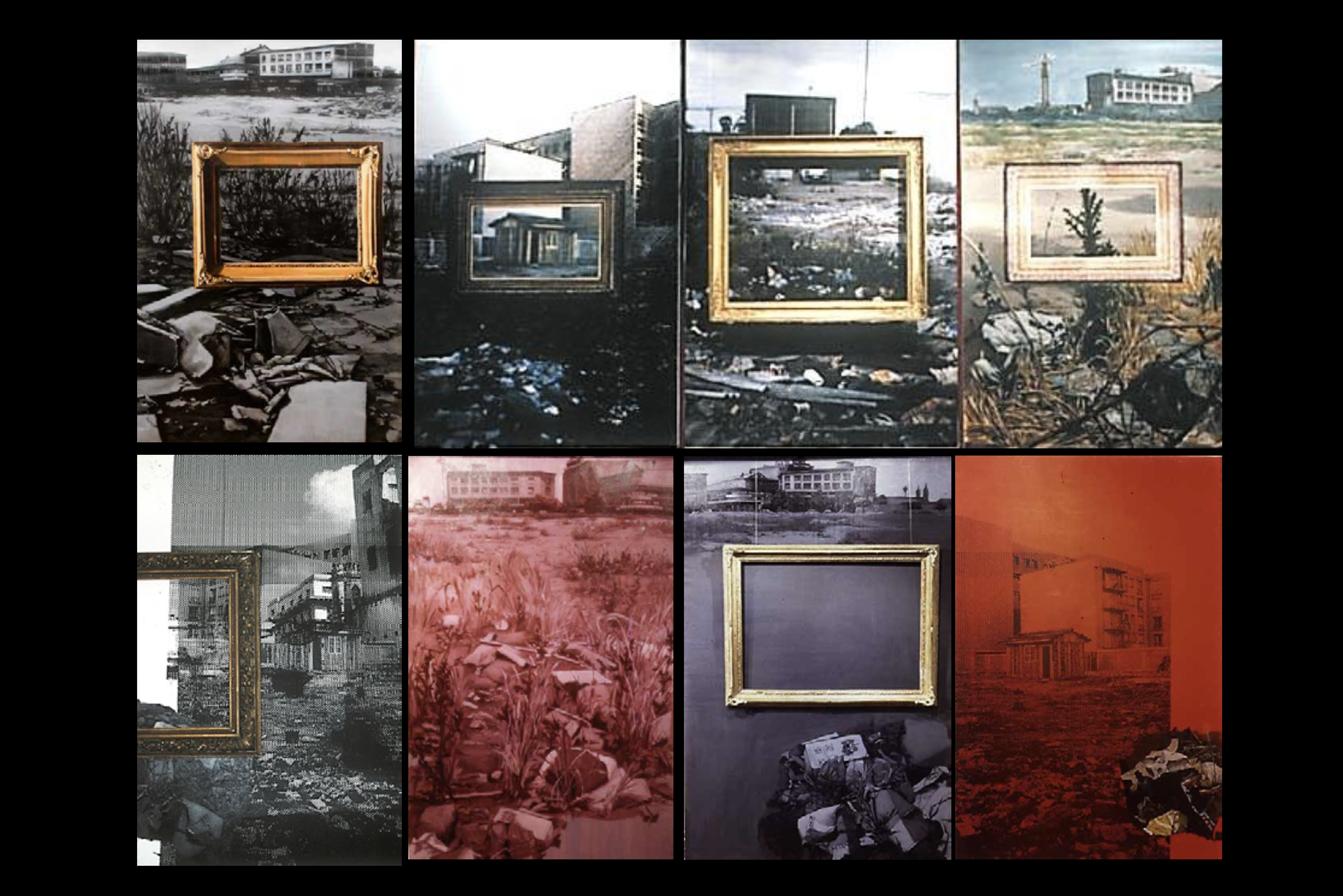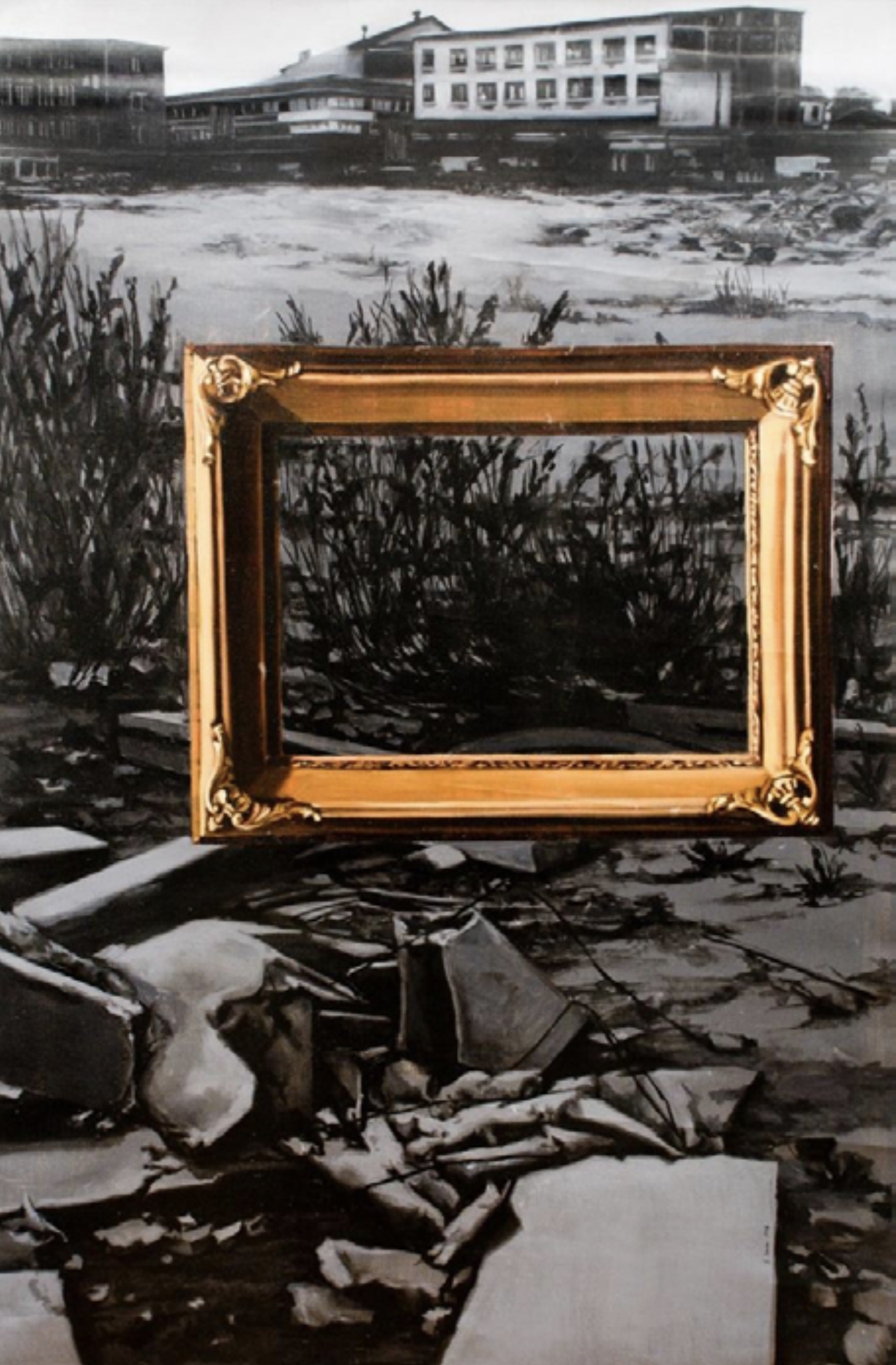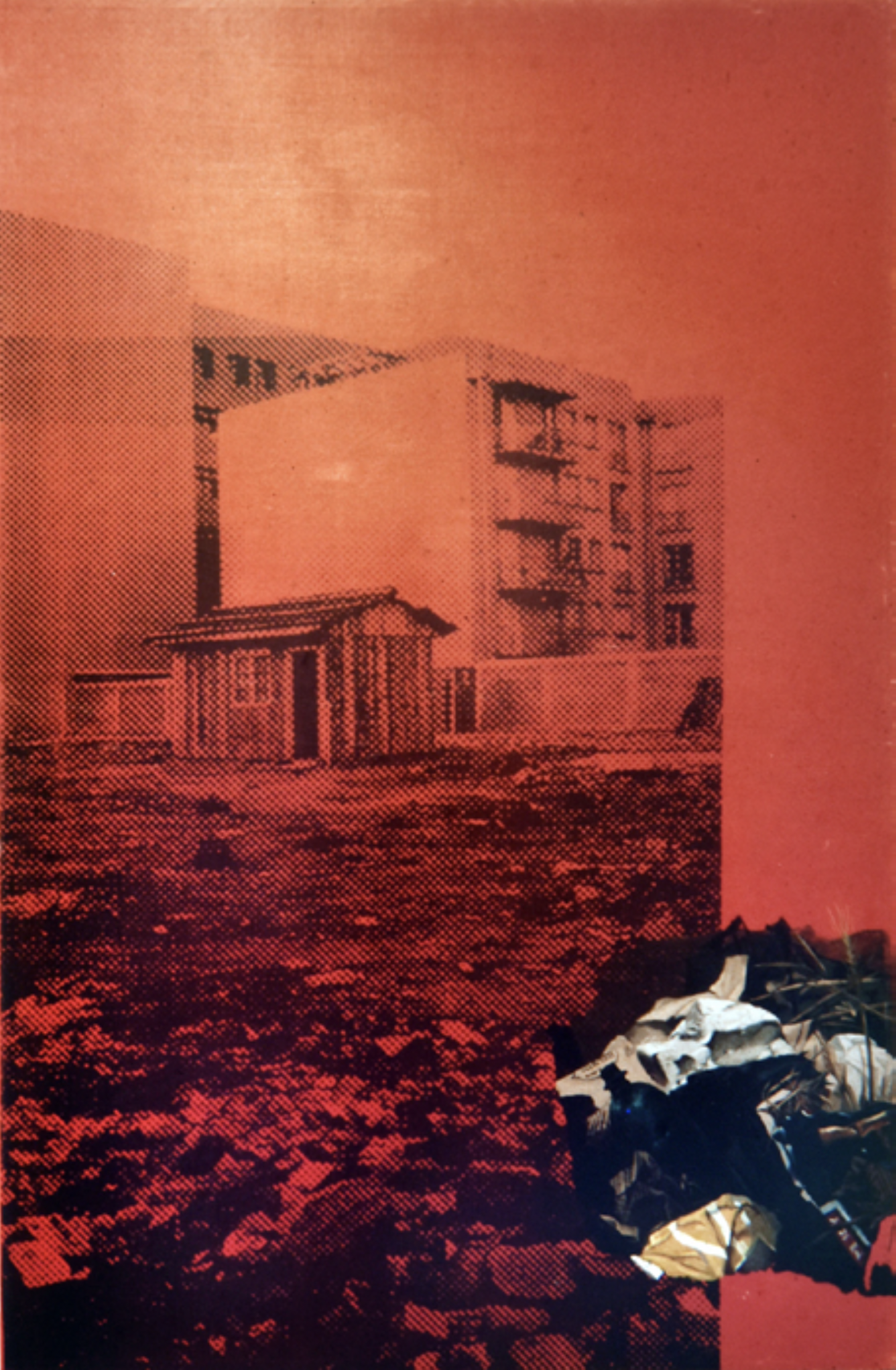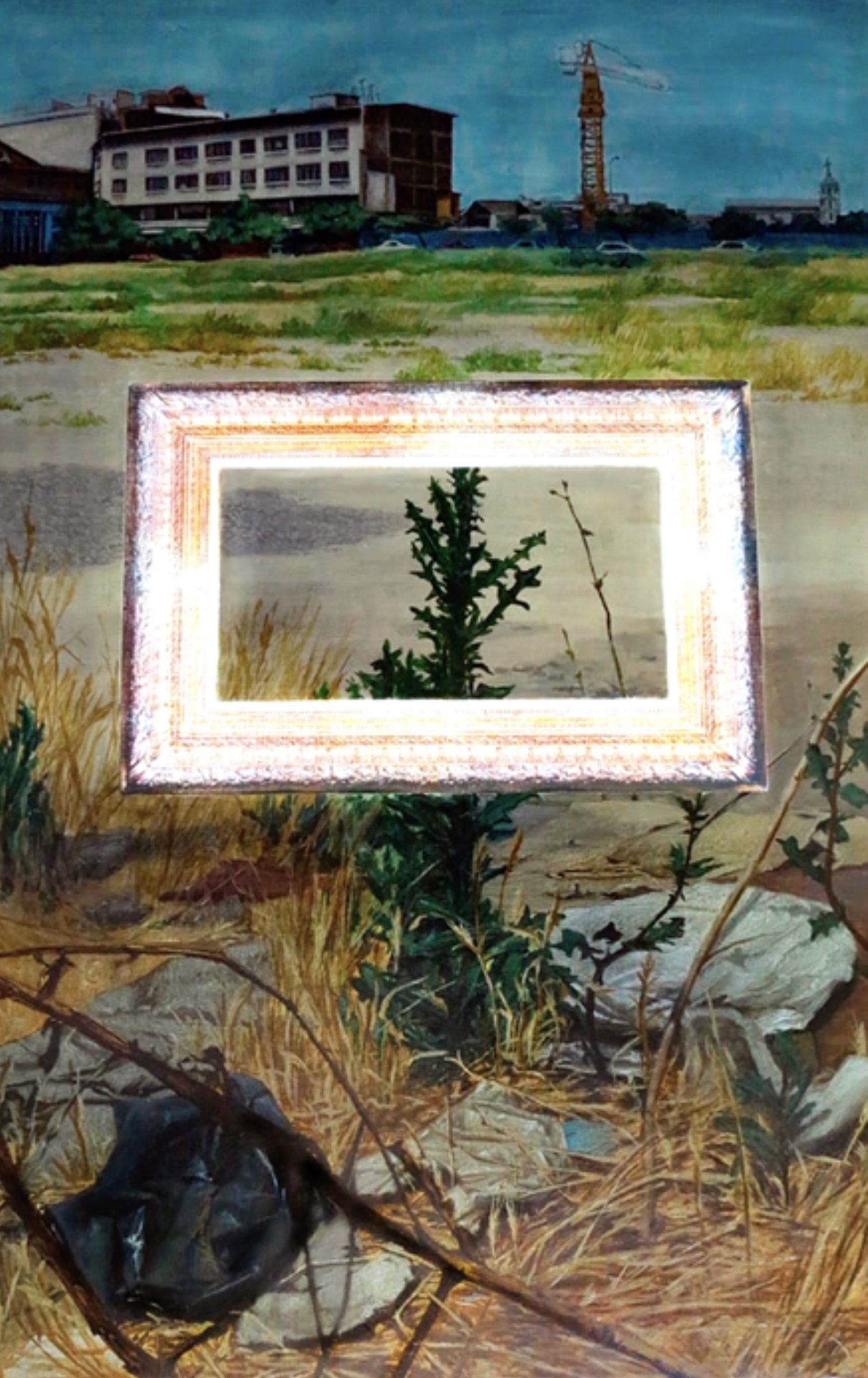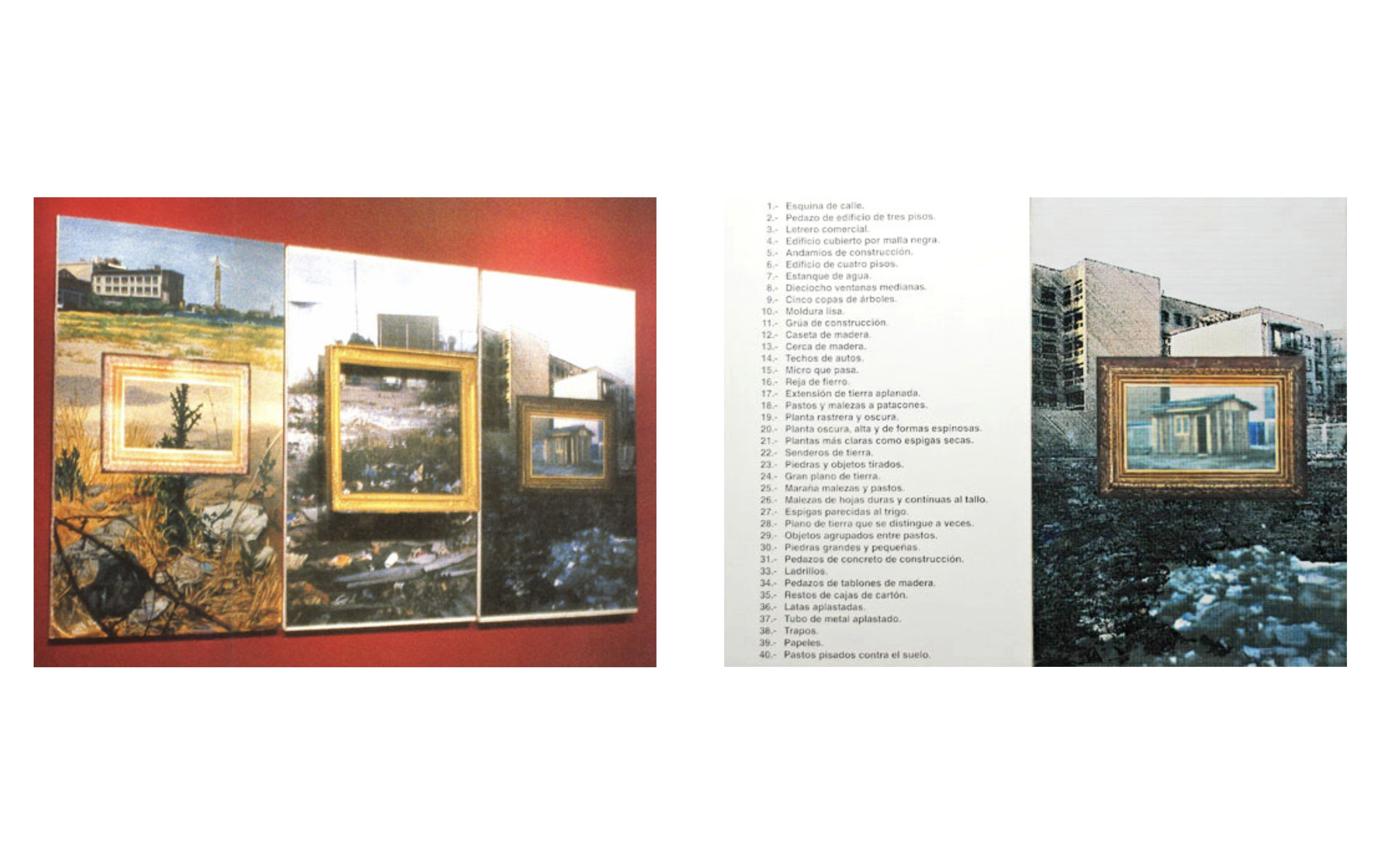
No ha lugar
In 1997, I took the “eriazo” site (wasteland) as a symbolic image to make two series. The first one is entitled No ha lugar and consists of a polyptych installed on a red painted wall, made up of panels where five eriazos registered in the center of Santiago appear.
This polyptych addresses the difficulty of representing the wasteland. In the search of tensing the different ways of representation, and having them as a discursive reference, I classified them according to their efficiency (mechanical procedures) and their inefficiency (manual procedures). I took the opportunity to oppose the pictorial image to the digitized photographic image, passing through silk-screen printing.
To allude to the place of the exhibition, I took out from the Museum’s storerooms stylish frames, which I installed on some of the panels. Other frames were painted, and others printed. The trompe l’oeil materialized. An object was attached to the painting. An object proper to the place where the work was installed, placed on an “improper” landscape. The landscape of the wasteland, in this case, because of its different levels of translation of the real image, no longer functions as a backdrop, but rather, because of the procedures used -it had no veils (veils)- it clearly shows its absence of beauty, making its discomfort with respect to the landscape of the city, an unfinished and contradictory city, more evident. A piece of image of the periphery that appears in the center.
One of these panels contained an image that I continued to use later, that of an inhabited wasteland. In this place you can see a wooden house installed in the middle of a site surrounded by new buildings, recently constructed, product of the real estate boom of the years 96-97, threatening the construction of a new city, superimposed on the previous one and with the possibility that most of the wastelands I had worked on until that moment, would cease to be vacant sites.
The polyptych ended with a canvas in which he listed the landmarks or visual elements that he was able to distinguish in the place, from the last plane to the first. It was a kind of description, without narrative elements. The image to which this enumeration corresponds was an uninhabited site occupying a whole block, located on San Diego Street, which I photographed leaving a very high horizon line, almost at the top edge of the canvas, so that the vanishing ground plane formed a large part of the surface of the image.
exhibición:
COLLECTIVE EXHIBITION
“CAMPOS DE HIELO: ARTE JOVEN EN CHILE 1986-1996” (ICE FIELDS: YOUNG ART IN CHILE 1986-1996)
ciudad:
país:
Especificación:
- No ha lugar (Overruled)
Polyptych in oil, pen, enamel, serigraph, digital gigantography and objects on canvas
